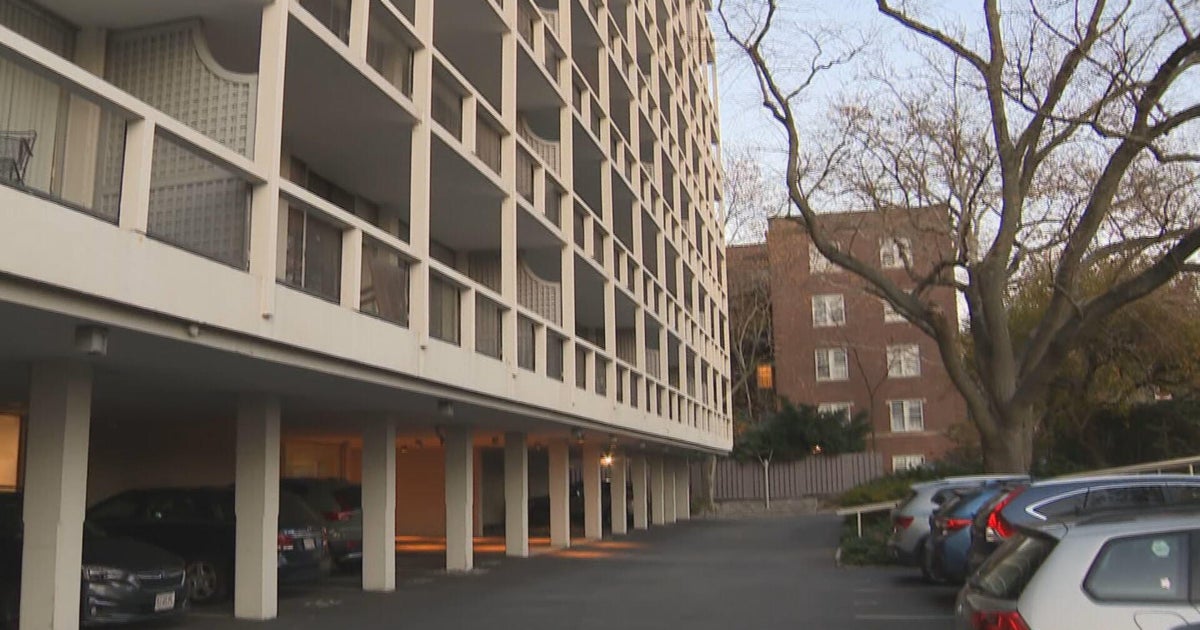I-Team: Concrete Cracking At Seabrook Nuclear Power Plant Building
SEABROOK, NH (CBS) - It's a form of concrete degradation sometimes called concrete cancer and one nuclear watch dog group says several structures at Seabrook Nuclear Power Plant have it.
"Seabrook is the first U.S. reactor known to have the problem," said Natalie Hildt Treat, Executive Director at C-10 Research and Education Foundation.
The plant and the NRC, the Nuclear Regulatory Commission, have been monitoring the concern for years. Just recently federal regulators found the cracking concrete has grown. Hildt Treat calls it slow moving, "but definitely progressing."
The NRC says it's one structure, limited and there's plenty of time to fix it. In August, the NRC issued a violation to NextEra Energy Resources, the owners of Seabrook, for failing to adequately project the progression of the degrading concrete in the control and diesel generator building,
NextEra declined the I-Team's repeated requests for an interview and plant visits, instead provided a statement, saying the issue was related to the level of information provided in an evaluation report, and that there was no issue with the ASR itself.
ASR or alkali silica reaction is the condition that can develop in cement resulting in the swelling and cracking of concrete where water and moisture can in get causing structural problems.
The NRC called it a finding of "very low significance." Saying that "other than this minor finding, which we have addressed, our program received a clean bill of health.
James Lambrechts a professor at Wentworth Institute of Technology, says ASR is certainly a concern. "The longer you let it go the bigger the cracks get, the deeper the problem becomes," Lambrechts said.
When Natalie Hildt Treat visited the plant a couple of years ago, she said she could see the moisture and "spider pattern cracking."
The NRC tells the I-Team, the structures are safe. In its August inspection, its report found limited progression in the one structure and at a slow enough rate that NextEra has time to develop a plan to address the issue.
The nuclear watchdog group C-10, an organization that has been at odds with Seabrook for decades, has been operating a radiation monitoring system in the area around the plant for nearly 30 years. The data recorded in real time and sent to the state, has never shown high levels of radiation.
While the monitoring is helpful, Senator Ed Markey questions the lack of federal standards or regulations for ASR monitoring at nuclear power plants and is calling for greater NRC oversight of Seabrook.
"I still don't think they've gone far enough to monitor the concrete as it starts to deteriorate," said Sen. Markey. "I think that there is a lot more that they should be doing."
As for C-10's Executive Director Hidlt Treat, who lives in the area with her family and also wants more NRC scrutiny of Seabrook, say she thinks and hopes the plant is safe.
The NRC tells the I-Team the affected structures remain capable of performing their safety function. And the agency also says it has resident inspectors who will continue monitoring the concrete on a regular basis. In an e-mail to the I-Team, NextEra says that "Seabrook Station is by far the largest source of clean energy in New England."
Full statement from NRC:
An August NRC inspection report for Seabrook documented an ASR-related finding for NextEra's failure to consider ASR growth-rate data on one structure. The specific locations were in two underground hallways and one wall in the control and diesel generator building. The issue was classified as "green", meaning it is of very low safety significance, because the structures remained capable of performing their safety function. As such, NextEra will now take action to address the issue and NRC inspectors will follow up on those activities.
The NRC inspectors found that NextEra was following the NRC-approved methodology for monitoring and evaluating structures affected by ASR, but NextEra's assessment did not look forward to ensure the areas will remain functional, given the increased ASR growth.
NRC continues to have confidence in the ASR monitoring and evaluation program.
You asked about the progression of ASR. NRC inspectors' review of data for most structures found trends that indicated there was minor change. The progression rate discussed in the inspection report for the one structure, although unexpected, is limited. However, the rate is such that NextEra has time to develop mitigating strategies and corrective actions, as necessary. Our inspectors determined that the affected structures remained capable of performing their safety function at all times.
If we determined the safety of the structures were in any way not capable of performing their safety function, we would intervene, up to and including requiring a plant shutdown.
The NRC will continue to have engineering inspectors and subject matter experts from our headquarters office with backgrounds in materials, concrete and structures inspect and review the concrete degradation at Seabrook on a regular basis. Additionally, our onsite resident inspectors who are our independent "eyes and ears" at the plant perform plant walkdowns, monitor daily activities and complete inspections related to ASR- affected structures. Our inspection results are documented in inspection reports that are publicly available on our webpage.




